A series of five new images from NASA’s Chandra X-ray Observatory show the beauty of space as seen in the X-ray wavelength. Data from Chandra has been combined with data from other telescopes operating in the visible light and infrared wavelengths to show some of the unique features of the high-energy universe.
The images show a range of objects from the heart of the Milky Way to supernova remnants, each one combining different sets of data to create a stunning view of an object that couldn’t be perceived in this way by human eyes.
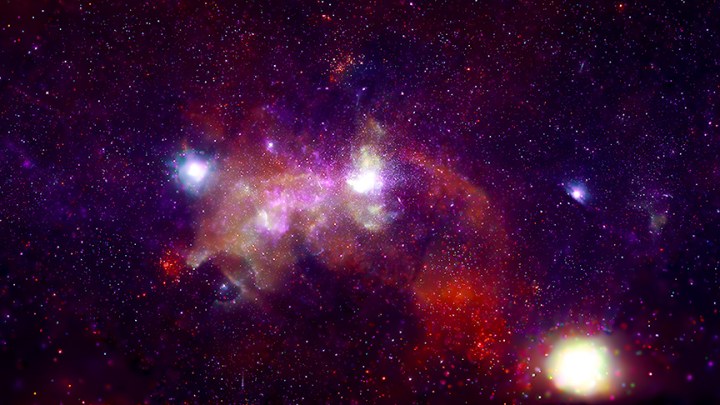
The center of our galaxy, shown above, is a busy region full of objects like massive stars, incredibly dense neutron stars, superheated clouds of gas, and a supermassive black hole named Sagittarius A*. The clouds of bright color show the presence of energy in the X-ray wavelength.
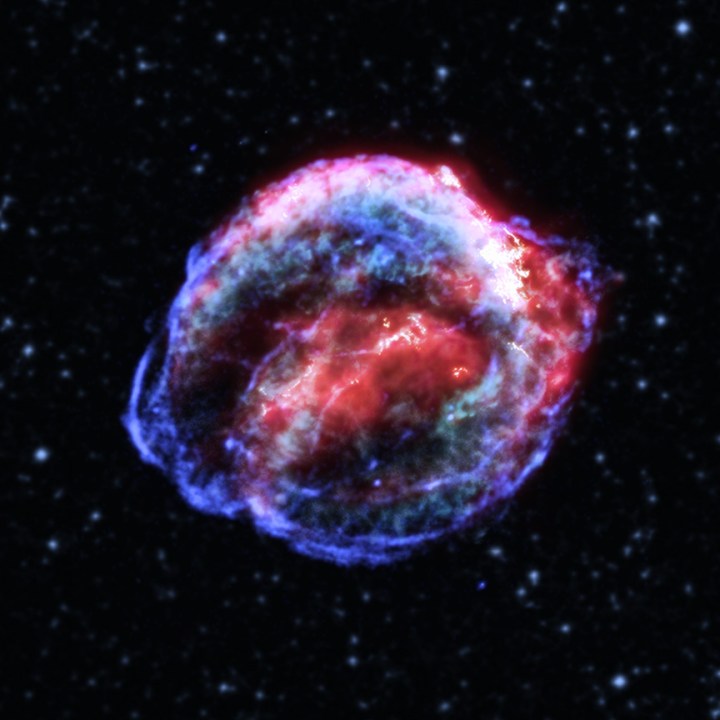
When a massive star reaches the end of its life and explodes as a supernova, the shockwave from the explosion can reach out far into space and interact with nearby dust and gas to form a supernova remnant. These shells appear around the site where the star exploded, and this image combines optical, infrared, and X-ray observations to show the different parts of the remnant like the debris and the blast wave.
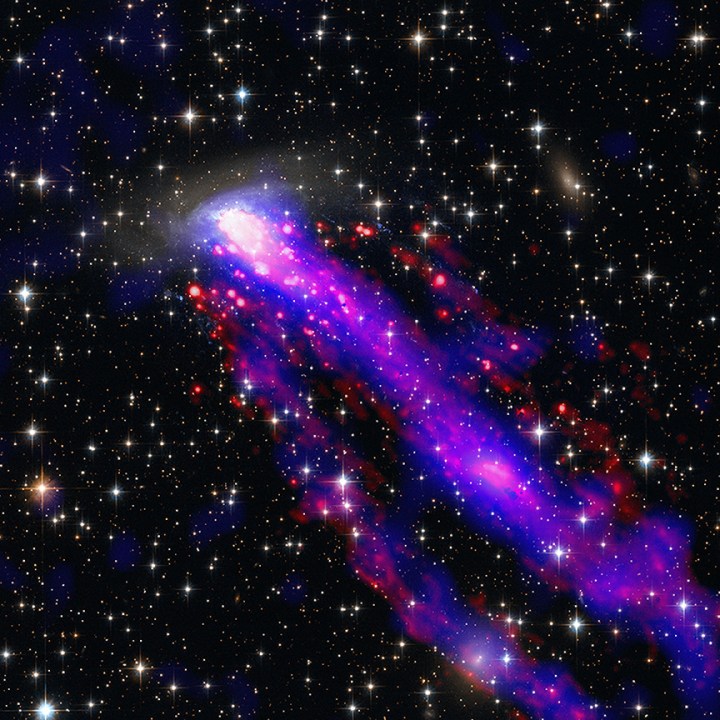
This galaxy zips through space at a tremendous speed of 1.5 million miles per hour, leaving a dramatic pair of tails in its wake. As the galaxy moves, it trails superheated gas which gives off X-rays that Chandra can observe, shown in blue. The patches of red are hydrogen, which was observed in the infrared. Visible light is represented in orange and cyan.
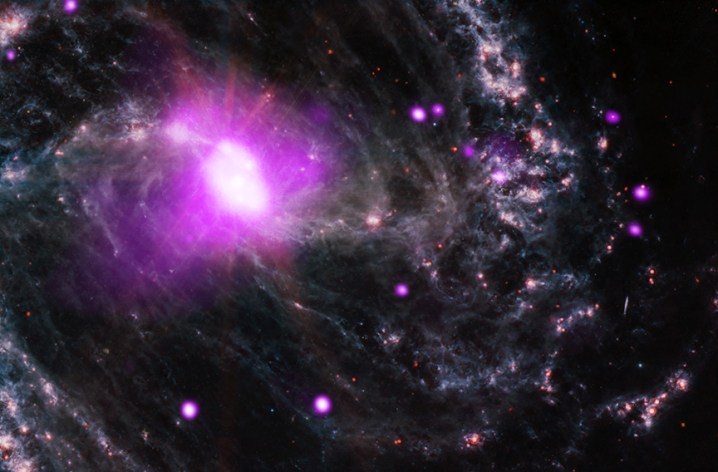
Like our galaxy and most others, NGC 1365 also hosts a supermassive black hole at its center. This image shows the hot gas swirling around the black hole in purple, as it gradually falls in and the black hole devours it. The Chandra X-ray data is combined with infrared data from the James Webb Space Telescope.
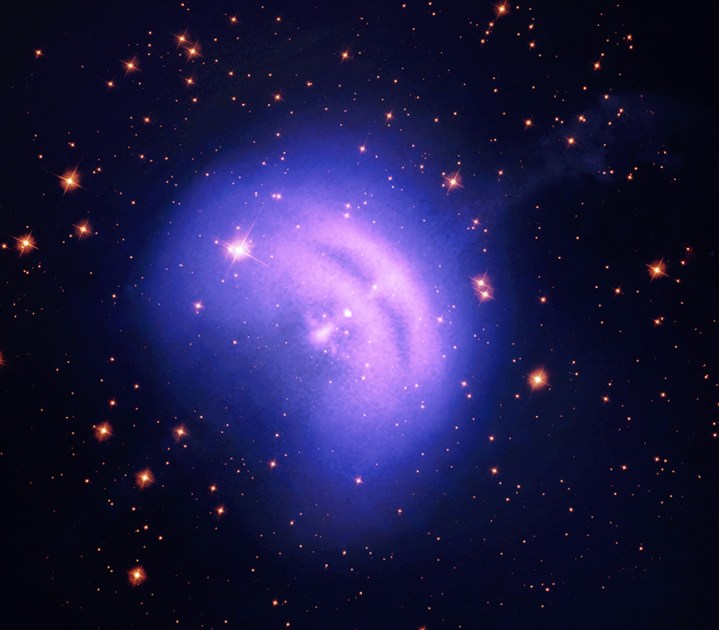
Finally, another supernova remnant is shown here. Within the remnant is a pulsar, a type of neutron star that has a strong magnetic field and which gives off regular pulses of energy in high wavelengths like X-ray and gamma-ray. The purple glow is X-ray energy captured by Chandra, while blue light is from another X-ray telescope called IXPE. It is set over a background of stars captured in the visible light wavelength.
Editors' Recommendations
- See incredible time lapses of two of space’s most famous objects
- See planets being born in new images from the Very Large Telescope
- Four telescopes work together to create a gorgeous image of a supernova remnant
- SpaceX reveals new launch date for 5th attempt at Falcon Heavy mission
- SpaceX stands down from Falcon Heavy launch for third day in a row




